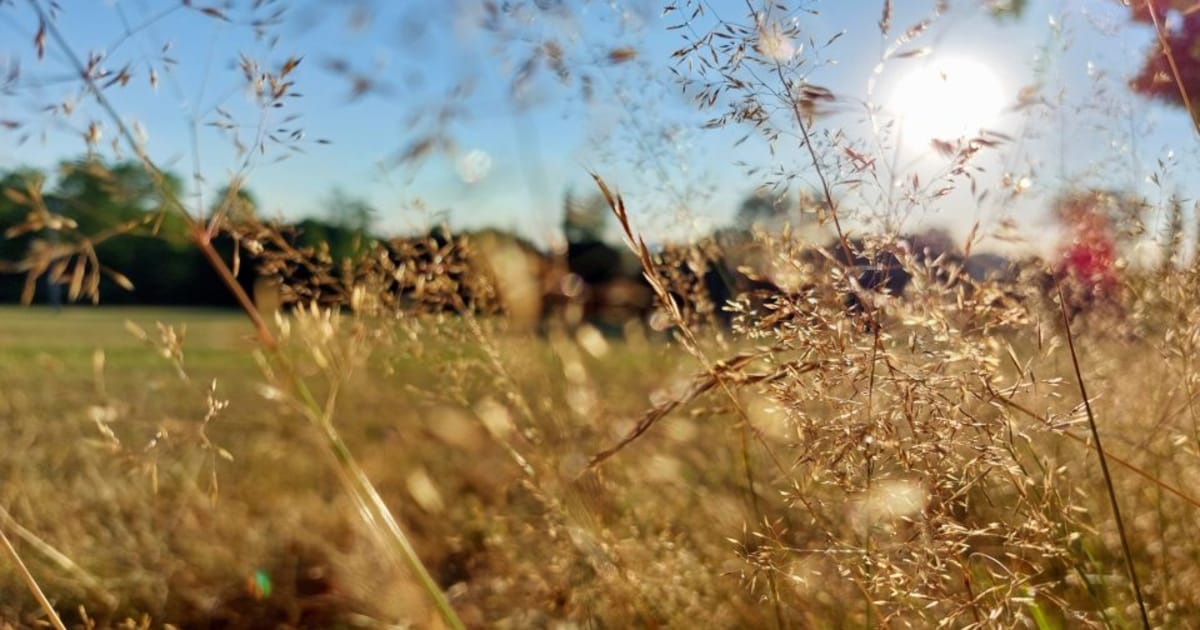We have some pretty serious analysis from the Intersucho project, with a very scary figure that a quarter of Czechia is experiencing extreme drought this year. What are the signs of a drought that you and your team can see?
“Well, we are in the process of what we call a ‘green drought’ at the moment, because we are not seeing at first glance that there is a massive undercut of the available soil moisture, compared to the normal level. That’s something that we really observe in the data. We can see that a combination of a warm winter, low snow cover, and also above average temperature in the winter and early start of the season caused a depletion of the soil moisture. Because of the recent onset of low temperatures, it’s masked, so vegetation seems to be green and doing fine.
“But when we look in more detail at the satellite data, we see that the condition of vegetation has really been deteriorating over the past few weeks. We have several hundreds of observers of Intersucho, mostly agronomists and foresters, and they all report that we have a potential decline of yields in many parts of the country. That’s the news from last week.
“What we are also seeing, from the measurement of the Czech Hydrometeorological Institute, are very unseasonably low flows in rivers. We have an unusually low amount of water, not only in the topsoil that we are monitoring, but also with rivers, reservoirs and underground water storage.
“At the same time, what we are seeing on the global scale, we see that the drought is going from the British Isles, south Scandinavia, most of Denmark, Germany and the Czech Republic, and it ends pretty much in Asia. It’s a belt of lower than usual soil moisture. At least for the next ten days, the European part of the drought seems to be stable and settled in the region between the British Isles, the Czech Republic and Sweden.”
How does this compare with previous years? I imagine that comparisons are very important in assessing the severity of the drought.
“That’s part of it, but we are in the process of a changing climate. We can see that really in the spring, we will, based on the climate signal, be witnessing a loss of soil moisture every year by a bit, which is what we really observe. So part of the signal we are seeing is climate change.
“At the same time, comparing with previous years, I can draw a comparison especially with the years 2015, 2018 and 2019, which were major drought years here. What we could see is that all this year had a similar early onset of a soil moisture depletion, which then continued during the summer with less than usual rainfall and above average temperatures.
“However, we also had seasons where we had an almost similar situation, not that long like this year, but then the rain came and saved the situation. So we are not saying we are heading for anything major in Central Europe. We have to be really careful with the forecast, and humble, because here any long-term predictions are not skillful. But on the balance of probability, it is more likely that we are going to have a drier than usual summer, because our soil moisture depletion is relatively deep.
“But of course, it cannot be ruled out, many of the previous droughts were finished by floods. The last case was in September of 2024, where we had a starting flash drought in August, then followed by a major flooding event. So it is tricky to make a long-term prediction. But as the situation stands, when we are at the start of the warm season here in Central Europe, we expect that it’s going to be dry and we should conserve the water resources at the moment.”
And during the summer, when do you predict the drought to be at its worst? And what will the consequences be for Czech society?
“Well, I would really love to have the ability to forecast, because I can see only ten days from now with relative certainty. We can say over the next ten days, which means almost to the end of May, we will have very little precipitation. I can already now say there will be some impact on agriculture and yields. That’s very likely, given the status of the crops.
“But at the same time, I cannot see beyond ten days. So again, a probabilistic forecast, which we can do based on the past climate, would tell us that with so low a soil-moisture reserve, it’s quite unlikely that in the period of the next two months, we will get to normal conditions, or it’s less likely that we will have a full profile saturated to the normal levels at that point of time.
“I would really say tossing the coin, it’s very likely we will have a drought this year. We can only predict for the next ten days and I can’t see any improvement on the radar at the moment. What I would expect is that we will be talking about drought at least at the end of May.”
Fitting this year’s circumstances into the wider pattern of climate change, is this kind of weather behaviour just something that we’re going to have to get used to?
“I’m not saying to get used to it. We need to adapt to it. We have done a global study showing very clearly that in the sort of mid-latitudes, we should expect a decrease of soil moisture, and that’s something that has been observed since the early 1980s. Central Europe is one of the regions of Europe where this can be very nicely depicted both in the modelled and measured data. It is unfortunately projected for the future. So yes, drought is one of the facts of life. We will have to take it into account more than in the past.”
